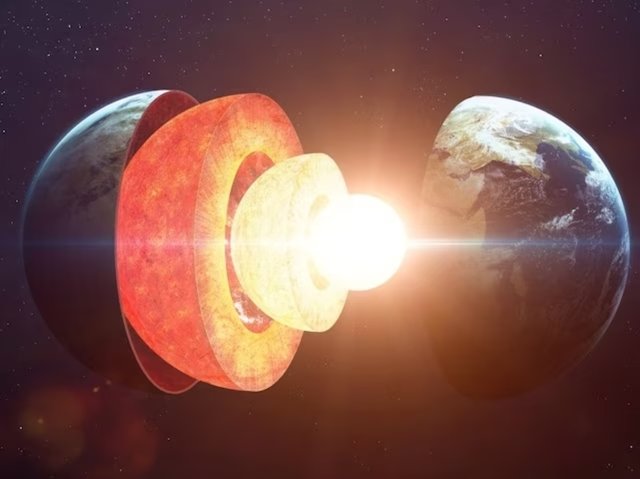
These changes could impact Earth and have effects on the length of the day. The magnetic field of the Earth protects it from harmful solar radiation.
Scientists have said that the inner core of the Earth’s movements are slowing down and are moving in reverse direction or backwards, according to a new study. Scientists have been observing the Earth’s core since 1936 after Danish seismologist Inge Lehmann discovered that the Earth has an inner core.
A research paper published in scientific journal Nature in June this year revealed more information about the ‘backward movement’ of the Earth’s core. The researchers said that the Earth’s core has slowed down rotating to such an extent that it is now moving backward relative to the fluid layers around it, according to a report by US broadcaster CNN which accessed the study.
Why is the Core Rotating in Reverse?
Citing the paper published in Nature, the broadcaster said that it confirms that the core underwent a slowdown and said that it supports the theory that the earth’s core’s rotation decelerates and it is part of a decades-long pattern of slowing down and speeding up.
Dr. John Vidale, Dean’s Professor of Earth Sciences at the University of Southern California’s Dornsife College of Letters, Arts and Sciences, who co-authored the study, told the broadcaster that their findings suggest changes in rotational speed follow a 70-year cycle.
“We’ve been arguing about this for 20 years, and I think this nails it. I think we’ve ended the debate on whether the inner core moves, and what’s been its pattern for the last couple of decades," Vidale was quoted as saying by CNN.
Implications of a Slowing Core
Located approximately 3,220 miles (5,180 kilometers) beneath the Earth’s surface, the solid metal inner core is encased by a liquid metal outer core.
Earth’s inner core is composed primarily of iron and nickel and its temperatures are comparable to the surface of the sun as they reach 5,400°C. This intense heat and the unique composition of the inner core play a crucial role in the geodynamic processes that influence Earth’s magnetic field and geological activity.
Earth’s magnetic field exerts a strong force on the solid ball of hot metal at its centre, making it spin. Simultaneously, the gravity and movement of the fluid outer core and mantle create a dragging effect on the core. Over many decades, this push and pull of forces lead to variations in the core’s rotational speed.
The movement of metal-rich fluid in the outer core generates electrical currents, which create Earth’s magnetic field. This magnetic field is crucial as it protects our planet from harmful solar radiation. Although the inner core’s direct influence on the magnetic field is not fully understood, scientists have suggested that a slower-spinning core might affect the magnetic field and slightly shorten the length of a day. This was reported by researchers in 2023.